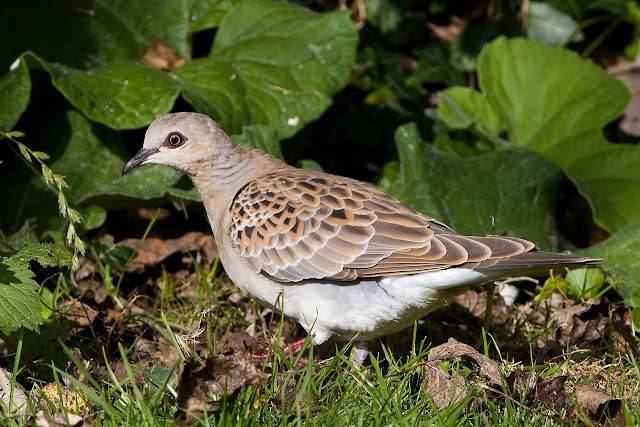I missed out on a trip to Titchfield Haven on Wednesday. Even when Dave reported back that he had photographed the Barred Warbler and got his life tick I wasn't too worried. I had seen one before and had a record shot, of sorts, to show for it. It was only when I looked at his blog, that I realised just how well it was showing. The one I had seen was skulking in the bushes and staying hidden most of the time. There was definitely an opportunity to get a better picture.
Thursday was rain and gale force winds but Friday promised better weather and I set off early for Titchfield. A good decision, I got there just as it was getting light and was able to photograph the bird with only four people present. It was happily sitting in a cotoneaster by the visitors centre eating the berries. By the time I left, less than an hour later, the crowd was building and the bird was starting to look more agitated, snatching berries and flying to an adjacent tree to eat them.
 |
| showing the undertail covert markings |
and below the same bird but with a soft early morning sun looking more brown than grey
When the Visitors Centre opened I duly purchased my ticket and then took a walk around the reserve. Just as well the Barred Warbler was there or it would have been a total waste of money.
As it was, well worth the trip, giving me far better pictures than I had before.





















































